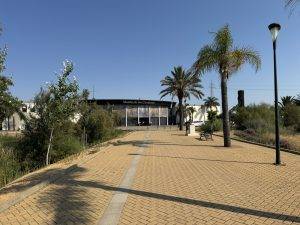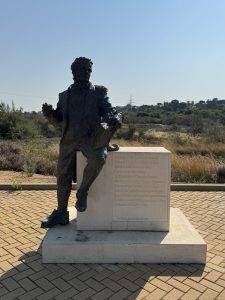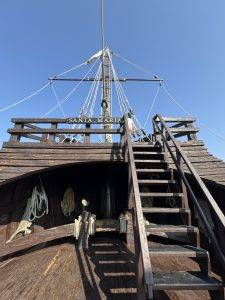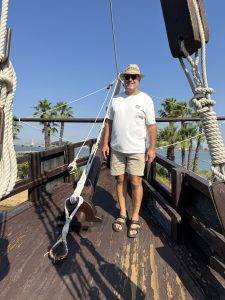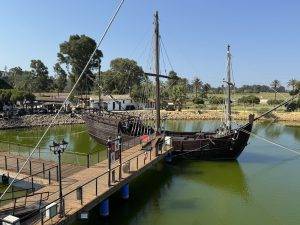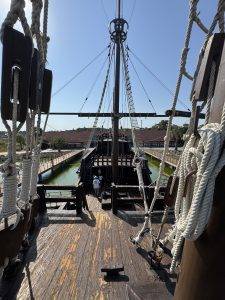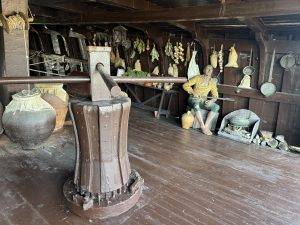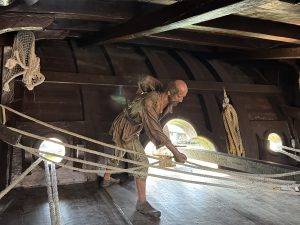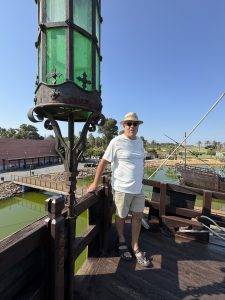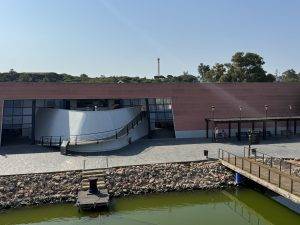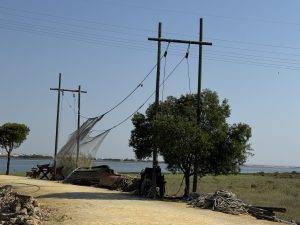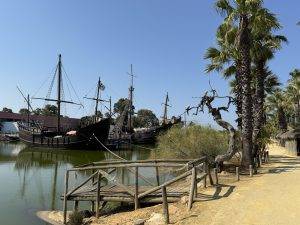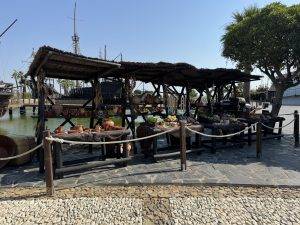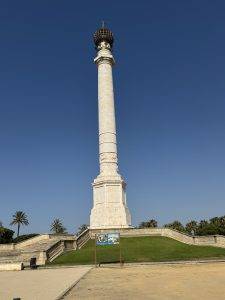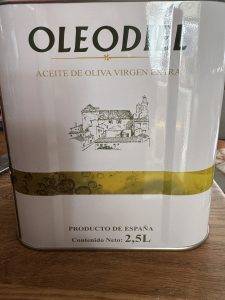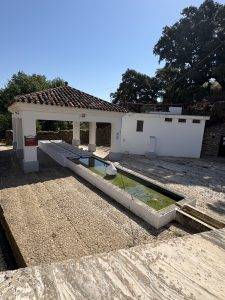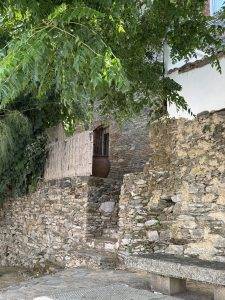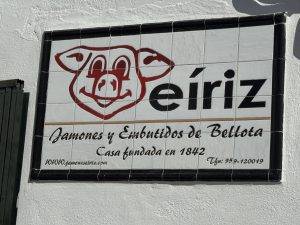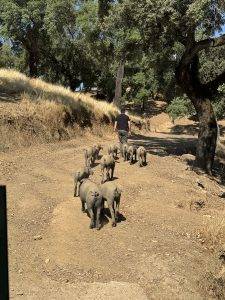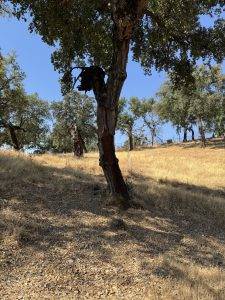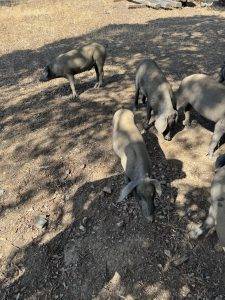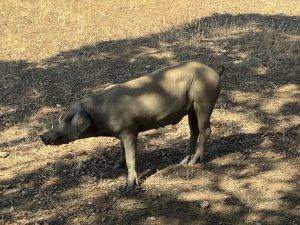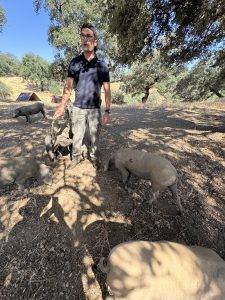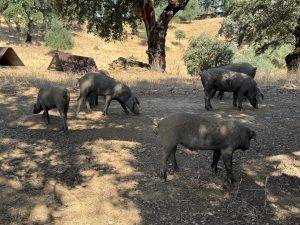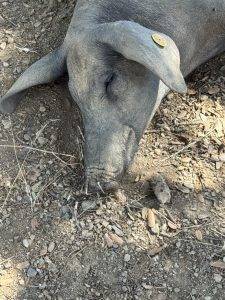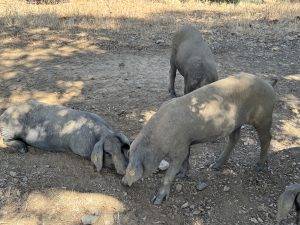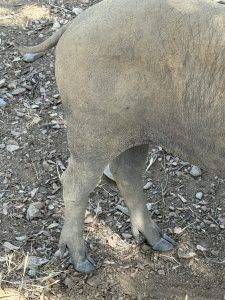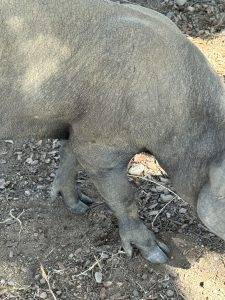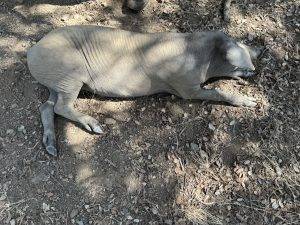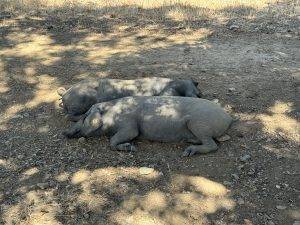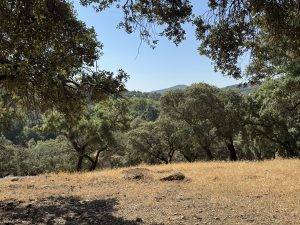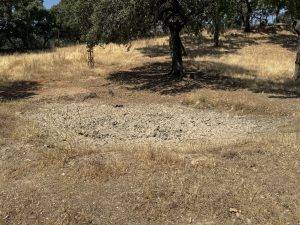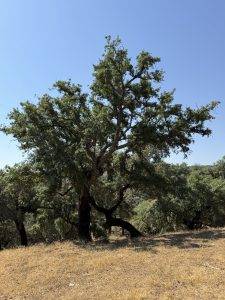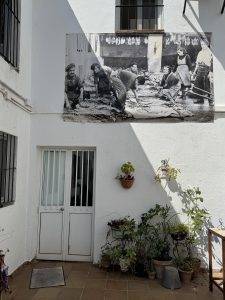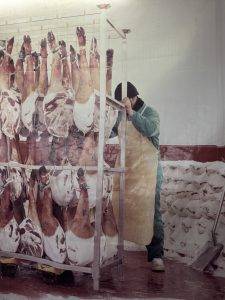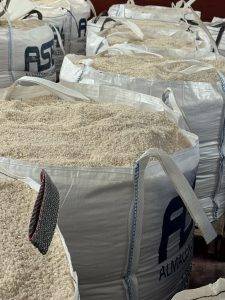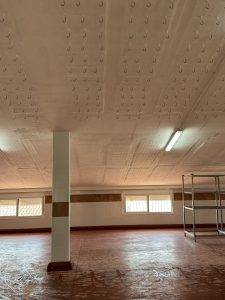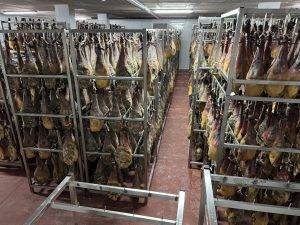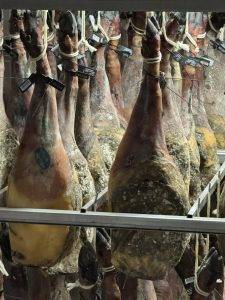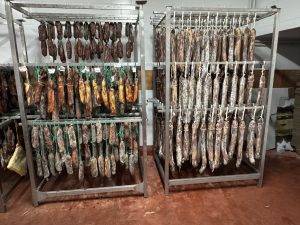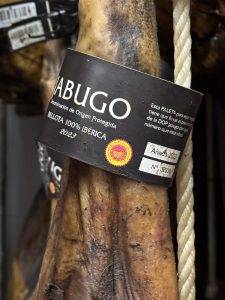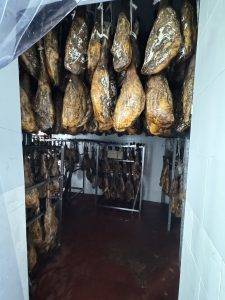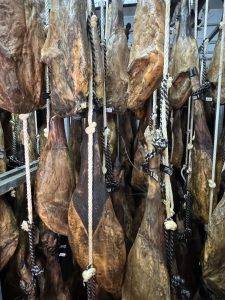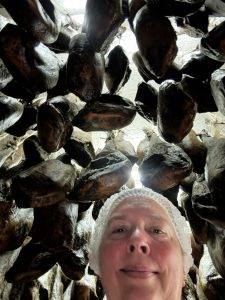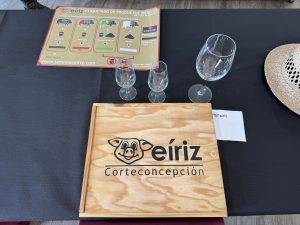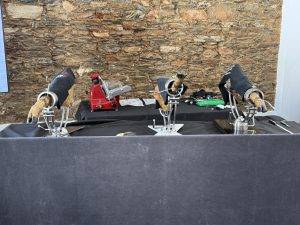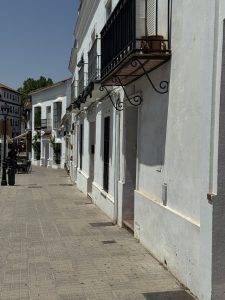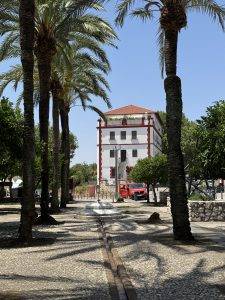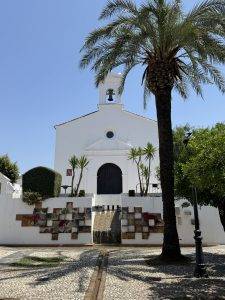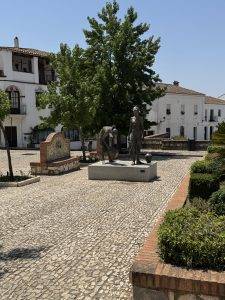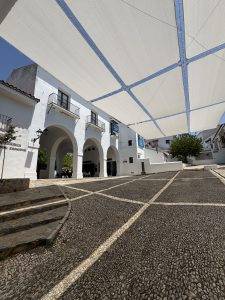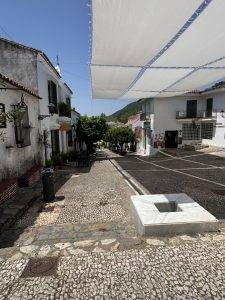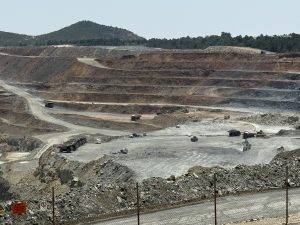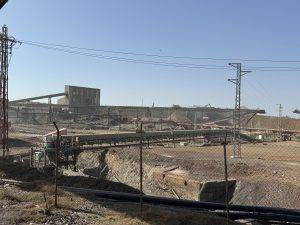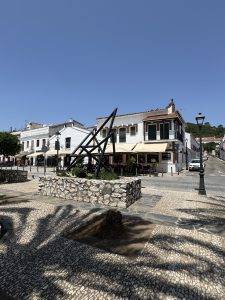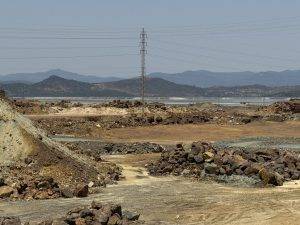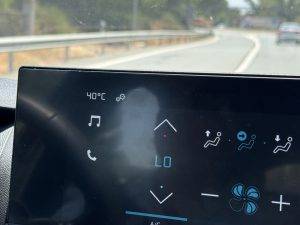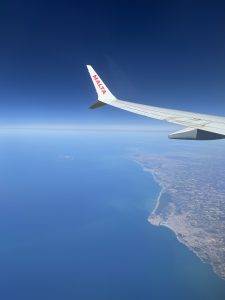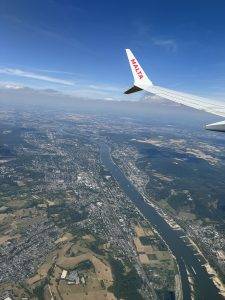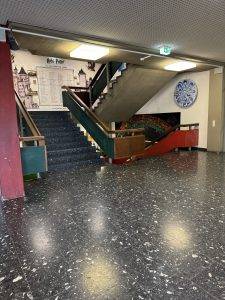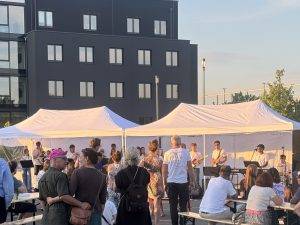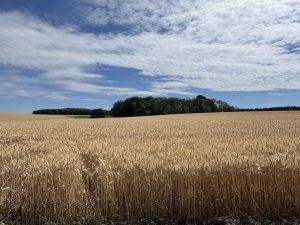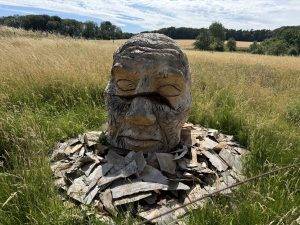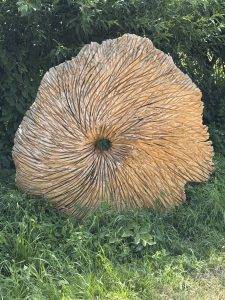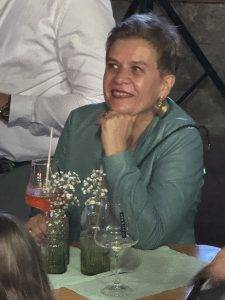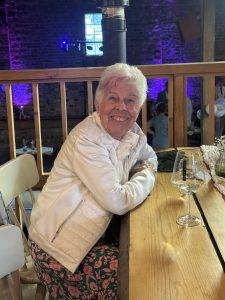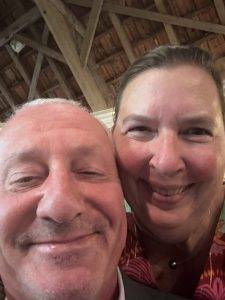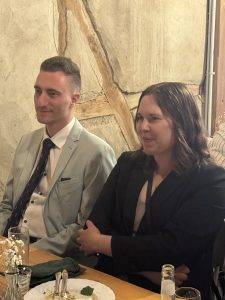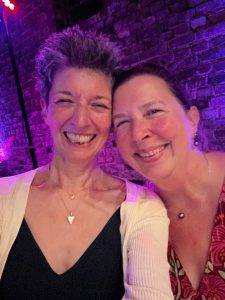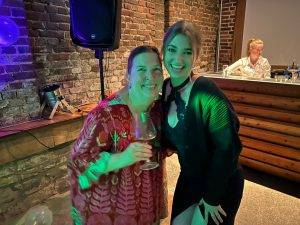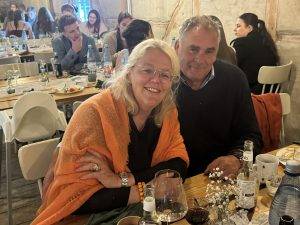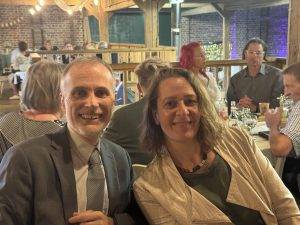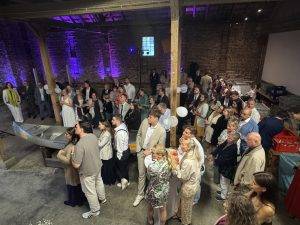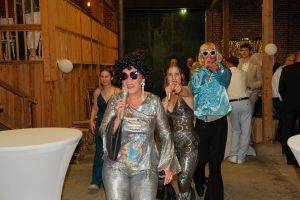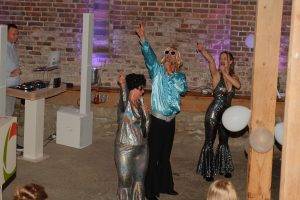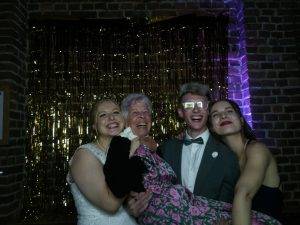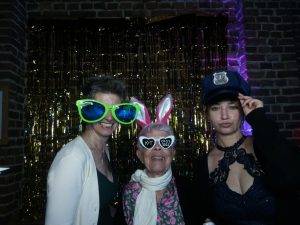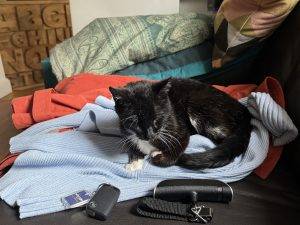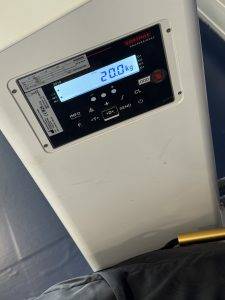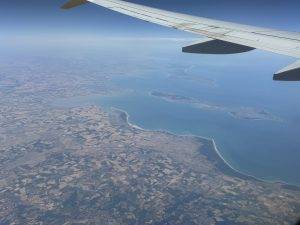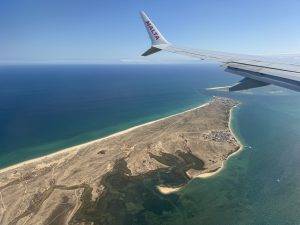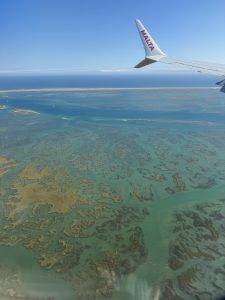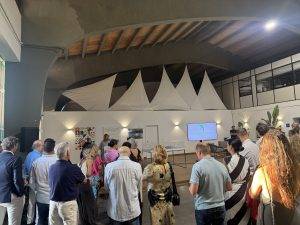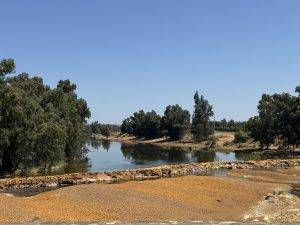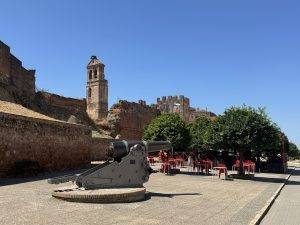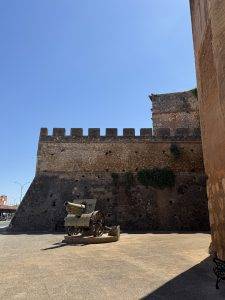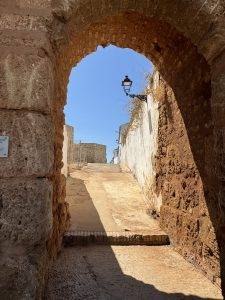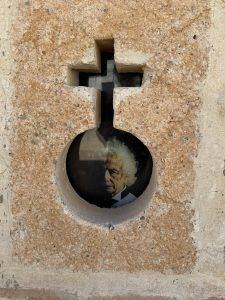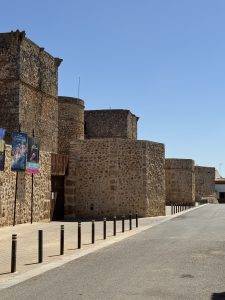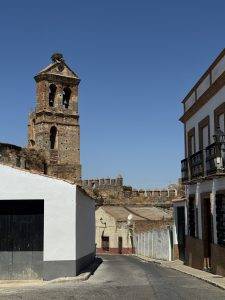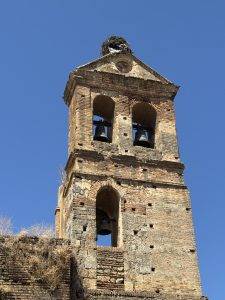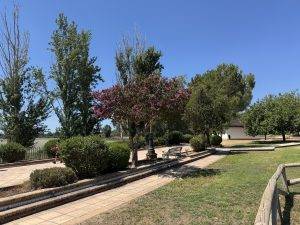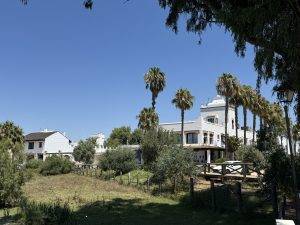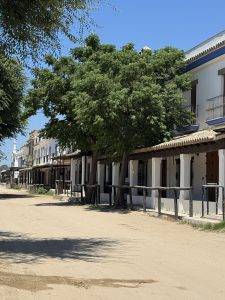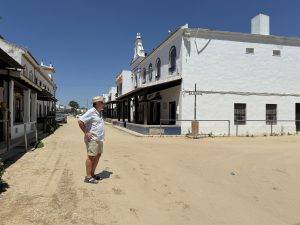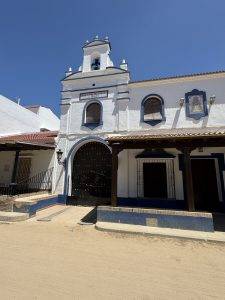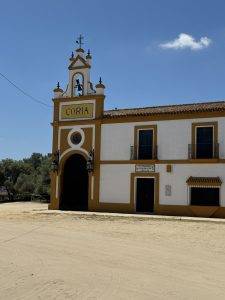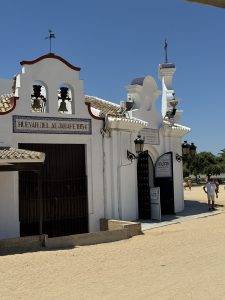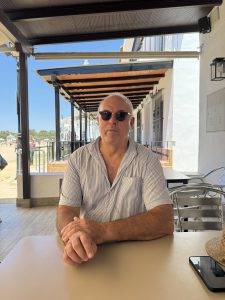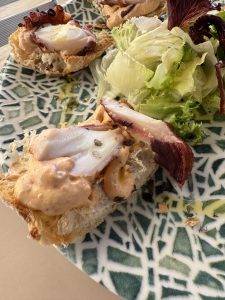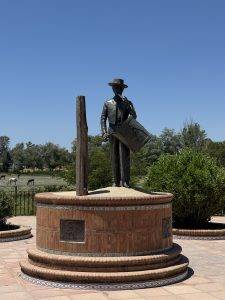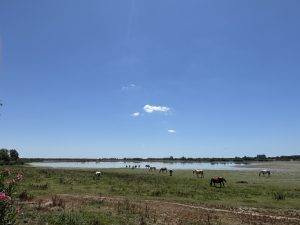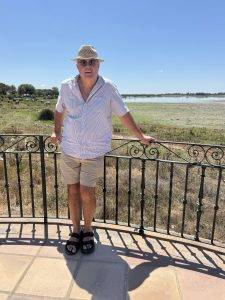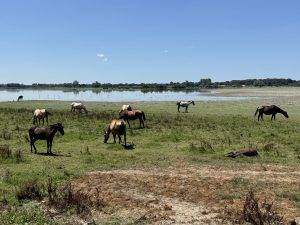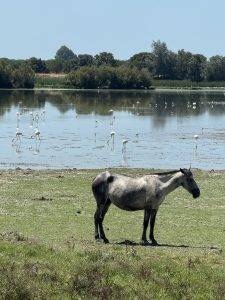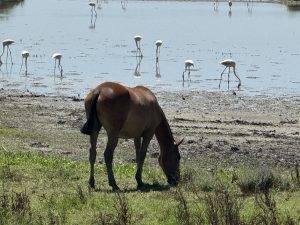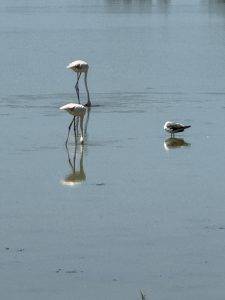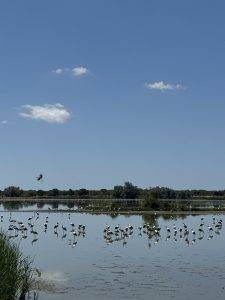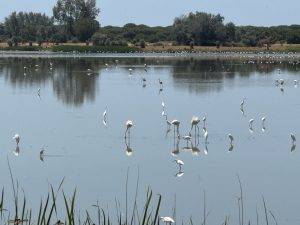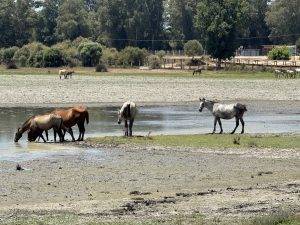June ends as it began – hot! After a few days with cooler temperatures of around 25° C, the heat is back. Fortunately, our rental car, which we have for a few days, has air conditioning. However, due to the heat, we decided to cross a few things off our list of excursions. For example, a train ride through the Riotinto mines doesn’t really seem appropriate in the heat.
Excursion to La Rabida
Less than a quarter of an hour’s drive from the marina and we have arrived in La Rabida on the Rio Tinto. Here you can visit the Muelle de las Carabelas. A museum with replicas of Christopher Columbus‘ ships. Why here? Quite simply explained:
In the neighboring town of Palos de la Frontera, Christopher Columbus set sail on 3 August 1492 with the three ships Santa Maria, Pinta and Niña and a crew of around 100 men in search of a new sea route to the spice regions of the Orient. At the time, a voyage into the unknown! Incidentally, the Fiestas Colombinas take place in Huelva every year at the end of July/beginning of August to mark the date. Let’s see what there is to report then. Back to Columbus, who is no longer regarded by many historians as the discoverer of the New World. This honor is now attributed to his two captains, the brothers Martin Alosnso and Vincente Yañez Pinzón. Both came from Palos de la Frontera. After a few detours and when they had almost given up hope of seeing land, the ships reached a Bahamian island on October 12, 1492 and named it San Salvador. On their onward journey, they discovered Cuba and Hispañola, where the Santa Maria sank. In March 1493, Columbus returned to Palos de la Frontera with the two remaining ships, firmly believing that he had discovered the route to India. Three more voyages followed in 1493, 1498 and 1502. Until his death, Columbus remained convinced that he had discovered the way to India.
We explore the Santa Maria and the Pinta, the Niña is unfortunately closed for renovation work. The ships probably didn’t offer much space or comfort and you can understand that the crew was on the verge of mutiny in 1492 after weeks of traveling. Next to the ships are reconstructions of scenes from the New World, which we also explore. Then we go to the museum, where we can read up on the history of the three voyages. Unfortunately, this is only in Spanish, so we have to look some things up afterwards. As the temperatures are rising steadily, we decide not to visit other sights in La Rabida, such as the monastery and the botanical garden. We also decide not to make a detour to Palos. Unfortunately, it’s just too hot.
Instead, we dedicate ourselves to a culinary excursion destination and drive to Gibraleon in an air-conditioned car. The Cooperativa Nuestra Señora de la Oliva produces the finest virgin olive oil there. However, the added value for tourists tends towards zero. We can buy some delicious olive oil in the tienda. But apart from a few boxes, there’s not really anything to see. After these two excursions we are completely exhausted and head back on board. Take a siesta! Sweat!!! Drink lots of water!!!!!
Excursion to Aracena and Jabugo
The next morning we have to get up early because we can finally move La Ola to her actual berth. It’s a little easier to get off the boat now that we no longer have a bollard behind us and can board again in one step via the stern platforms. Then we set off on our next excursion at 9 am. The Huelva region is home to one of the world’s best hams, Jabugo ham. And as we are always interested in learning more about culinary delights, I booked a tour with one of the local ham producers.
Slowly but steadily, the road climbs uphill. Past endless fields of sunflowers, their flower heads pointing in the same direction in unison. The higher we get, the narrower the roads become. We pass the mighty Rio Tinto mines and a little later through shady, oak-covered pastures. Finally, we reach the village of Corteconcepción with its 500 inhabitants. Here we have booked our tour with Jamones Eíriz, a family business that has been in existence for almost 200 years. After a short wait, Manuel greets us in perfect German. He grew up in Berlin and returned to his mother’s home town with his Spanish parents when he was 14. We walk a few steps with him through the blazing sun and reach the gate of a pasture. After Manuel has gathered the waiting Pata Negra pigs around him, we are allowed to follow him into the pasture and scramble after him, just like the pack of pigs. We stop under a shady oak tree and Manuel tells us all about the pigs. We learn that it is a requirement for the local ham that each pig has one hectare of pasture. As they only have 12 hectares, there are only twelve pigs. The pigs currently look quite thin as they can hardly find anything to eat from the wild. They are therefore currently being fed grain. Only from August/September, when they are allowed to feed exclusively on the fatty acorns of cork and holm oaks, do they put on weight and fat. The point at which the pigs are only allowed to feed on the acorns themselves is officially set by the ham inspectorate in the village of Jabugo and compliance with the regulation is very strictly monitored. At the age of 2 years, the animals are then slaughtered in winter. Until then, however, they apparently have a very good life with little stress, plenty of space and healthy food. The acorns are very sweet and contain unsaturated fatty acids, but the skin is not eaten. The pigs are 100% purebred Ibérico Pata Negra pigs, named after their black feet. They wear small rings through their noses so that they don’t destroy the roots of the oak trees when digging and are always on the lookout for food. As there isn’t much at the moment, Manuel is currently feeding them once a day. He is greeted by the animals with corresponding expectation and excitement. After the pigs have calmed down again, we are allowed to touch and stroke them. They have amazingly rough and dry skin and don’t smell like pigs at all. They love to be cuddled under the belly and are generally very friendly animals.
Next, we return to the farm. Manuel explains to us that they used to slaughter the animals themselves on the farm, but nowadays, for hygiene reasons, the slaughter takes place 30 km away. The meat is then returned for processing. In addition to the company’s own pigs, an additional 2,000 animals are purchased and also processed. For the first 2 weeks, the hams and shoulders are marinated in salt. The salt comes from the Cadiz region, as it is milder than the salt from Huelva. The hams are stacked about one meter high, with a thick layer of salt in between. To ensure that the salt is evenly distributed, the hams have to be moved after a week. However, as the slaughtering takes place in winter, there are currently no hams to be seen in the salt room. Instead, there are big bags of used salt and sacks of new salt. And a poster with a photo so that we can get a good idea of the process. The used salt has taken on a yellowish color from the hams and is reused as road salt in winter. After the hams have been in the salt for two weeks, they are hung in a drying room in the attic for 6 months. Before it gets too warm there in summer, they are transferred to Bodega One in the basement. Over the next two to three years, they pass through further bodegas, during which time they are regularly rubbed with sunflower oil. The sunflower oil is used to rub off the mold coating, which is not harmful as it is noble mold, but does not look good either. The hind legs are processed into ham (jamon), the front legs (paleta), bacon (pancetta), loins (lomo and lomito) and sausages in various flavors.
Once we have left the ham paradise behind us, the highlight is a delicious tasting and instructions on how to slice a whole ham properly. We try normal ham (Cebo) and the pure-bred, acorn-fed ham (Jamon Jabugo 100% Pata Negra Belota). Depending on the breed, rearing and feed, the ham is color-coded and given a number. Black stands for the highest quality of purebred Ibérico Pata Negra pigs that feed on acorns. In the Huelva region, this ham is called Jamon Jabugo de Belota 100% Ibérico. The ham is labeled red if the pig is 75-50% Ibérico Pata Negra and also feeds on acorns. If it is marked green, the proportion of Ibérico is only 50% and the pig is fed with acorns all year round. It may then no longer be labeled with De Belota, but only with Cebo de Campo. The worst quality is marked white and also contains 50% Pata Negra. However, it does not contain acorn-fed meat. These hams are sold under the name De Cebo. You can not only taste the difference in quality and see it in the color coding, but also notice it in the price. For the best quality, you can expect to pay 15-20 euros for 100 g. For a whole. Ham costs 700-800 euros. Manuel serves us wine, sherry and orange wine with our ham and lomo, which we are allowed to try. Also very tasty! As there are only two of us on the tour, we have a lively conversation that goes beyond ham production. Manuel is totally open, interested and extremely happy with his life in the countryside. Of course, we end up buying a few packets of ham, finely sliced and not whole.
We continue on to Aracena. In view of the temperatures of over 40°C, we have, as already mentioned, decided against a train ride on the old railroad through the Rio Tinto mines. Instead, we want to visit the cool grotto of Aracena. Unfortunately, the attempt fails once again due to the Spanish lunch break. The Gruta de las Maravillas, the Grotto of Wonders, doesn’t open again until 4 p.m. and we don’t want to wait two hours. So unfortunately, after a short stop, we head back to Huelva. Too bad, because Aracena makes a very nice impression and the grotto must be something very special. We might have to go there again on another occasion. On the way back, we make a short stop at the Mirador of the Minas del Rio Tinto. Fortunately, the viewpoint has a parking lot with shade, but it is still far too hot. A short walk across the unshaded area is almost unbearably hot. You almost feel like the soles of your shoes could melt off. So we quickly get back into the car, whose thermometer reads 49°C on departure. The air conditioning is clearly at its limit! After half an hour’s drive, the thermometer still shows an outside temperature of 40°C, but the closer we get to Huelva, the cooler it gets. Fortunately, it’s only 34°C when we arrive at the Marina del Odiel. It felt really fresh after the sweltering heat. We spend the rest of the day relaxing in the shade and treat ourselves to a visit to the marina restaurant in the evening.
Trip to Bonn
A wonderful occasion makes me travel to Germany at the beginning of July – my „great“ niece Katinka is marrying her Tom! Axel stays on board and looks after Lucky while I take the plane from Faro to Cologne-Bonn. Besides the wedding – sooo beautiful!!! – there are other activities. I meet up with Kerstin at my former school’s summer party in Sankt Augustin, go shopping for liquorice for Axel at Haribo in Bonn, get a hairdressing appointment at super short notice and meet up with lots of family and old friends at the wedding. Plus new acquaintances and lots of nice conversations. A visit that was well worth it!
Back in Huelva, I arrive just in time for the annual opening ceremony of the marina and can immediately listen to a few Spanish speeches. Unfortunately, we understand very little, but the presence and euphoric speech by the mayor „this is where the transformation of Huelva begins“ underlines the importance of the marina for the city.
Excursion to Niebla and El Rocío
As we have a rental car again so that Axel could pick me up from the airport in Faro, we go on another little sightseeing tour after my return. Fortunately, the weather is a little more bearable this time and not quite as hot. This time we head east out of Huelva. After half an hour’s drive, we reach the small town of Niebla on the Rio Tinto. The medieval town center of Niebla is surrounded by a Moorish city wall. We park outside the city walls and pass through one of the gates to the 15th century Castello de los Guzmán. We continue through a few alleyways, but after just a few meters we realize that there is not much of interest to see here. Especially because everything is closed on Sunday and there is no life on the streets. So we quickly return to the car and drive on towards the coast.
After another half an hour, we reach the pilgrimage site of El Rocío. There is life here and we are thrilled at first sight! El Rocío is actually just a few sand-covered streets, a church and numerous colorful houses with large verandas. However, once a year, at Pentecost, the tranquil village is transformed, as it is the destination of the largest Spanish pilgrimage, the Romería del Rocío. Hundreds of thousands of pilgrims from all over southern Spain make their way to El Rocío on foot, on horseback or in mule-drawn carriages, transforming the town into a colorful chaos. We are a long way from that today. Around the Ermita del Rocío there is a little hustle and bustle, tourists are being driven through the village in carriages and children are riding ponies. Just a few meters further along the promenade, however, things become much less bustling. What makes this place so attractive for us non-believers is not just the well-kept, colorful houses that belong to the pilgrim brotherhoods – hermandades. No, what we find much more fascinating are the countless water birds that frolic in and around the Charco de la Boca marsh lake, which is directly adjacent to the church square. El Rocío lies in the middle of the Doñana National Park and the lake is part of it. There are semi-wild horses on the lake shore and flamingos, herons, spoonbills and storks forage in the lake. Hundreds of birds are flying in the water and in the air above. What a great sight! We stop for lunch at El Pocito restaurant and enjoy a baguette with grilled pulpo and an omelette with bacalao and shrimps. Very tasty! Well-fed, we finally head back along the coast to Huelva. The route leads through endless pine forests and along high, overgrown dunes. Unfortunately, the route is a little monotonous and there is no view of the surrounding sea. Back on board, we have an ice cream for dessert and catch up on the siesta we missed. In the evening, a little baguette, ham (from super happy pigs) and cheese and the day is over again.

